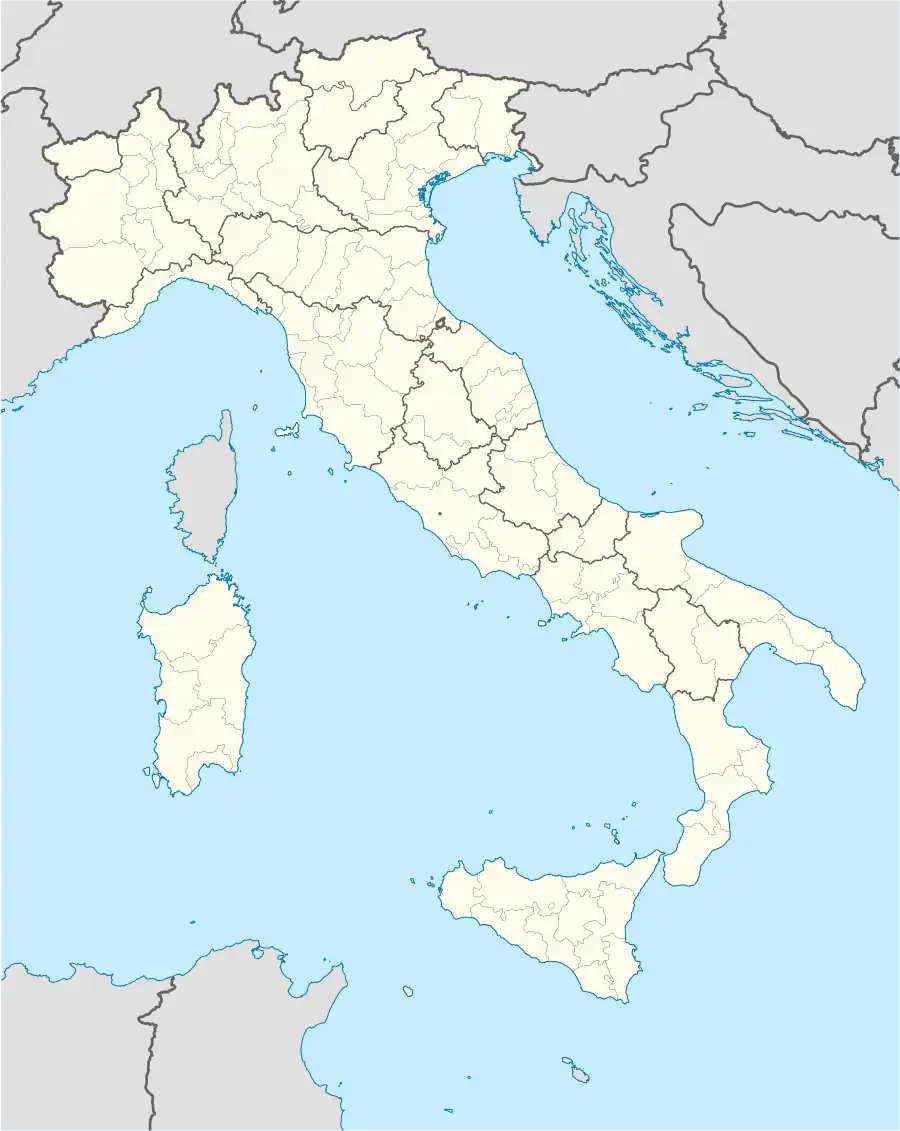Castello Tramontano
Castello Tramontano is a 16th-century fortification in Matera, that was built to control the local population.
| Castello Tramontano | |
|---|---|
| Southern Italy | |
 | |
 Castello Tramontano | |
| Coordinates | 40°39′50″N 16°36′21″E |
| Site information | |
| Condition | Preserved |
| Site history | |
| Built | 16th century |
Castello Tramontano is situated on Lapellio Hill, above the historical city of Matera with in the Basilicata Administrative Region. The city has been used many times as a set to represent the Holy land in film including Pier Paolo Pasolini’s "The Gospel According to St. Matthew" and Mel Gibson's "The Passion of the Christ"[1]
History
The Castello was constructed in Aragonese style, with a taller central tower and two lower side towers, both round, crenellated, and equipped with loops. Construction began in 1501 by Giovanni Carlo Tramontano, Count of Matera. The king of Naples, Ferdinand II, had promised the Materrani people that he would not give the city to any more feudal lords after Matera had already freed itself several times from the feudal yoke by paying various ransoms to remain a free city. Recognition of such a status is directly dependent on the Crown. Instead, Count Tramontano, who boasted claims against the royal treasury, asked and obtained the County of Matera in 1496.
The Count soon became hated by the Materani. Because he was burdened by debts, to cope with his situation, the Count heavily taxed the Materrani people. This heavy taxation allowed for the construction of the castle, that was situated on a hill dominating the city, outside the city walls, with the purpose of feudal control of the surrounding lands rather than defense of the city itself. 25,000 ducats were spent in total on the construction of the castle. It's believed that the construction at the time should have included other defensive towers, one of which was found under the central Piazza Vittorio Veneto in Matera together with other underground developments.
In response, some dissatisfied citizens gathered together and hid behind a stone, which has since been called "u pizzon 'du mal consigghj" (ie "stone of bad advice"), and organized a coup against the Count. On December 29, 1514, the Count was assassinated in a side street leaving the Cathedral of the same name, which was later called "Way of Ransom".
The castle thus remained unfinished. Restoration work began in 2008, owing to the castle and surrounding park falling into disrepair. Notably, these restorations aim to renovate the moat alongside and the tufa walls. The project is financed by lottery funds, but it is currently closed to the public.[2]
See also
References
- Hilary Danailova. "The Heights Of Italian Travel". NY Jewish Week. September 25, 2019
- Tramontano Castle, Matera, Divento.com
Bibliography
- Canino, Antonio (1980). Basilicata Calabria. Touring Editore. ISBN 88-365-0021-8.
- Matera: il Castello Tramontano. La Tipografica. 2010.
- Retrospettiva di un delitto: Giovan Carlo Tramontano e il castello di Matera. G. Barile. 2014.